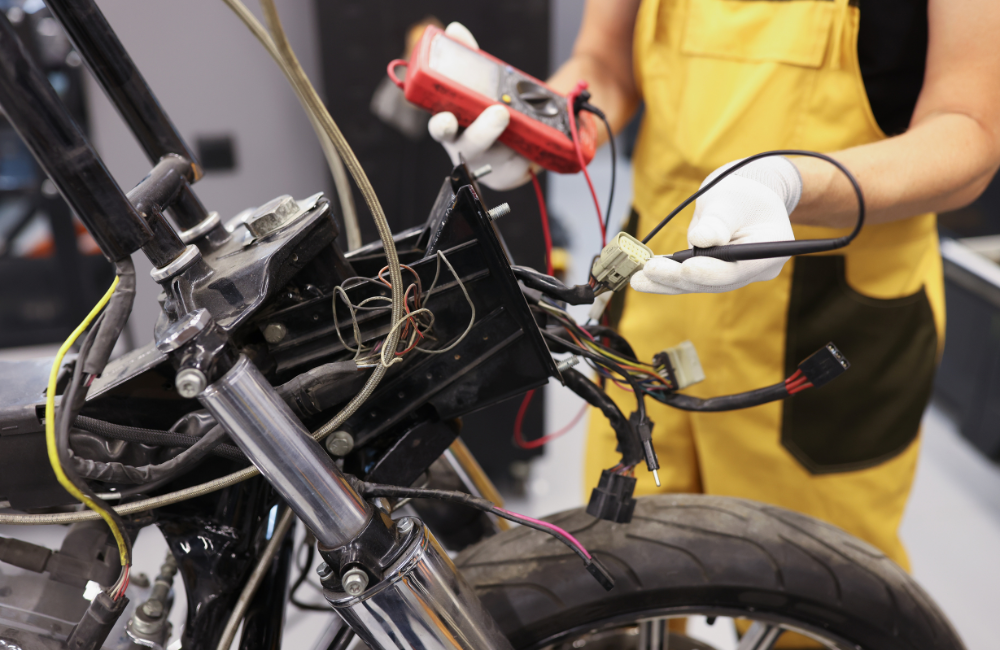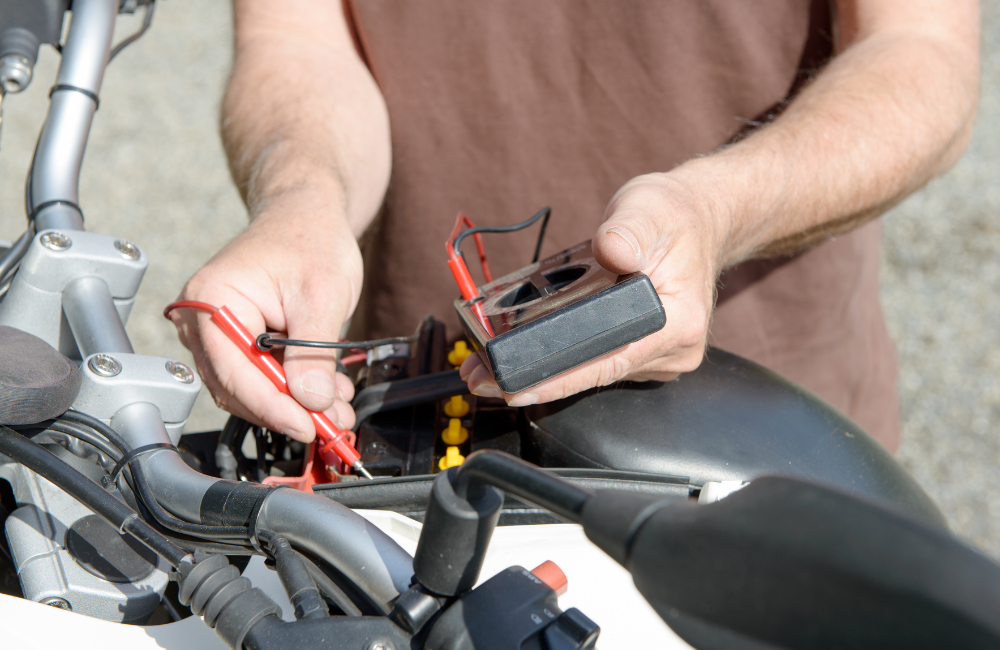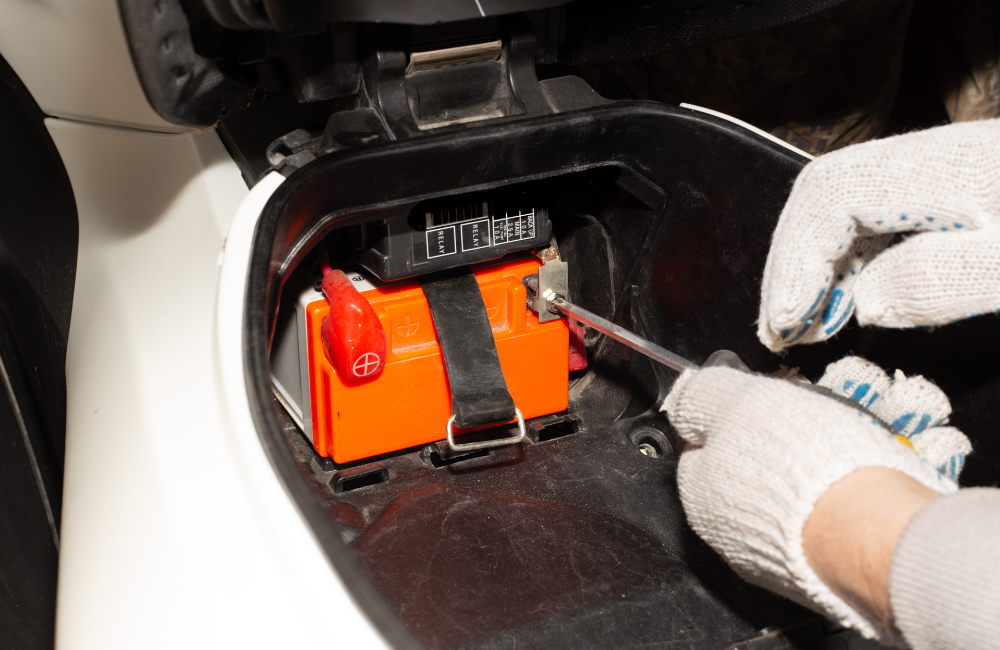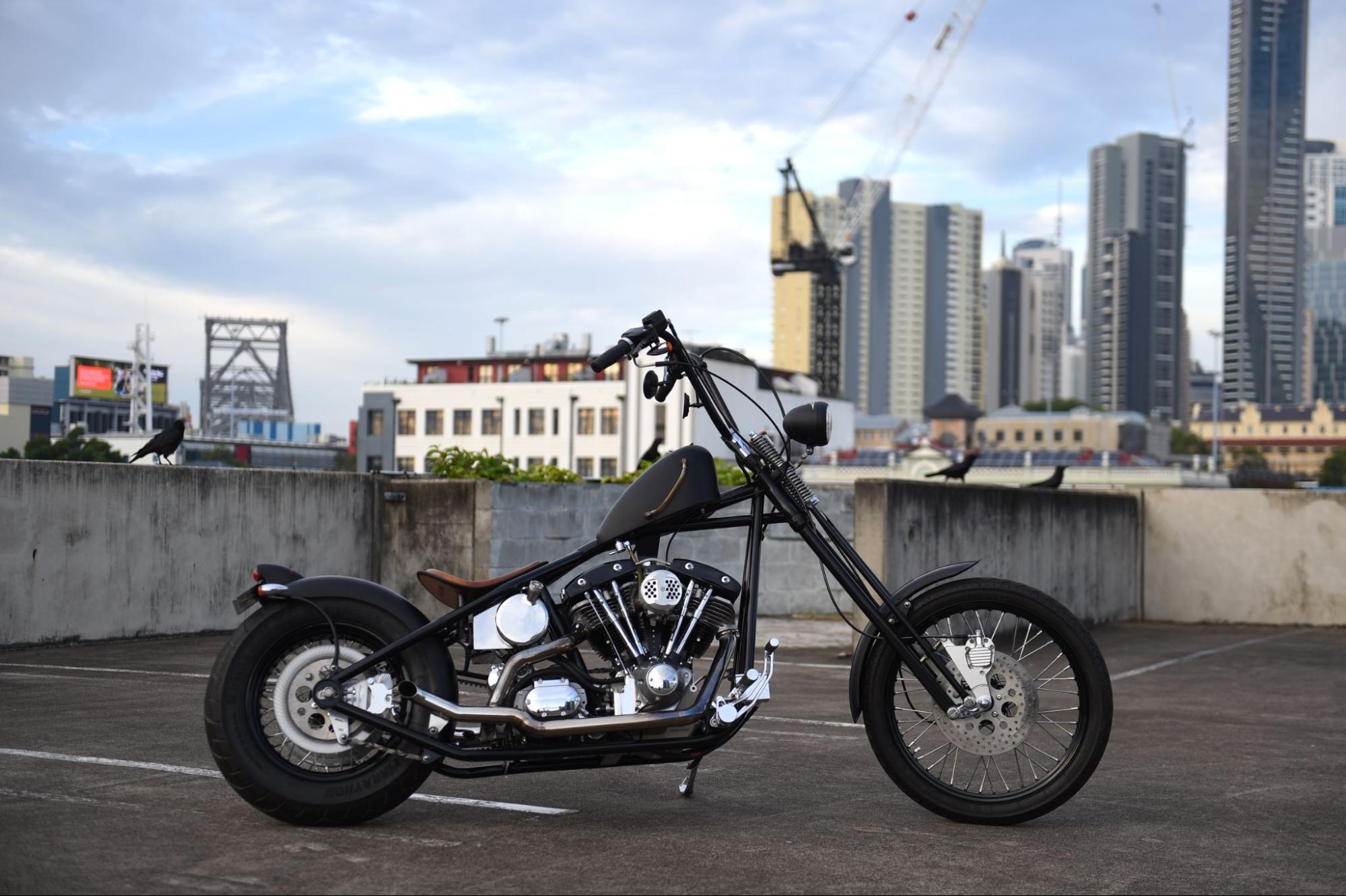It’s always frustrating to stand in your driveway on a cold morning, repeatedly thumbing your starter motor with no spark. Sadly there are many reasons why your motorbike might be taking too long to start (or sometimes not starting at all). One of the most common is that the time for replacing your motorcycle battery has arrived.
While petrol in the tank makes your motorcycle go, a good battery is essential for the quality of your ride. It starts the engine, provides power to the instruments and lights when the engine isn’t running and stabilises voltage fluctuations in the bike’s electrical system. With a flat battery in your motorbike, all the petrol in the world won’t get you far.
There are different types of motorcycle batteries on the market, including lead-acid, lithium-ion and gel, with lithium-ion the most recent type boasting some of the longest lifespans. Like every other motorcycle part, batteries wear out over time and eventually need replacing, often at the least convenient times.
How Motorcycle Batteries Work

A battery is essentially a device that turns chemical energy into electrical energy. While there was a time when motorcycles didn’t need batteries and instead ran on a points and condenser ignition system, nowadays batteries are common fixtures on motorcycles that power different components, including starter, lighting system, electronic ignition (ECU) and more.
The inner workings of motorcycle batteries and how they convert chemicals into power depends on the type of battery in your bike. Wet cell, gel, lithium-ion batteries etc., all have different processes happening inside them to produce electricity.
While the motorcycle runs, the generator or alternator of the engine produces electrical power, which then charges the battery. When you turn the key in the ignition, the battery provides electricity to the starter motor, which turns the engine until it kicks into gear.
While motorcycle batteries are designed to be recharged and discharged, eventually, they wear out over time and with repeated cycles. That’s when replacing the motorcycle battery becomes necessary.
Signs Your Motorcycle Battery Needs a Charge
Because motorcycle batteries are small, leaving them discharged can cause damage, and letting them remain uncharged through the winter can make them impossible to revive again. That’s why it’s important to charge your battery and keep it charged, especially if you won’t be riding for a while.
A fully charged battery should be at 12.73 volts or higher. Some indicators that your battery needs to spend some time plugged into your motorcycle charger include weak cranking, dimming headlights or dashboard lights, clicking sounds, loss of power, loss of electrical functions and battery warning lights.
Sometimes it can be hard to tell if a battery is dying or just needs a charge, which is why you should try charging the battery–checking for visual cues of wear and damage–before replacing the motorcycle battery.
Of course, there are also some reliable indicators that a battery is on its way out.
Signs Your Motorcycle Battery Needs Replacing

You may not have a flat battery on your motorbike just yet, but here are some clear indicators that replacing your motorcycle battery may need to happen soon:
Built-up sulfation
Sulfation tends to happen when you don’t fully charge your battery. As the battery discharges, the lead active materials will corrode along with the sulphate from the electrolyte. Sulfation is when the sulphate crystals become large enough to block the electron flow.
Luckily fully recharging the battery will turn the sulphate back into electrolytes to power your motorbike again. But if your motorbike has been sitting there and the battery hasn’t been used for a while, excess sulfation will decrease your battery’s charging capability and drain it much quicker than normal. At this stage, replacing your motorcycle battery is the only option.
Corroded or broken terminals
Corrosion is one of the key indicators that your battery is at the end of its lifespan, but corrosion itself doesn’t necessarily mean your battery is dying. Often, cleaning the terminals is enough to restore your battery. If the terminals are very badly corroded or broken, there’s not much hope aside from replacing your motorcycle battery.
Leaking acid
Leaking acid is one of the most alarming and dangerous indicators that your bike battery is clinging on for dear life. In this case, it’s unsafe to ride your motorcycle. Leaks are usually caused by chemical cases building up inside the battery, and acid can leak through the cracks of terminals.
Alternating reading
Inconsistent voltmeter readings from your battery are a sign that something is amiss. When the voltmeter reads zero, it’s time for a recharge. When you have a flat battery on your motorbike, even recharging doesn’t restore your battery’s power. The only solution is a new one.
Age
Like everything else, batteries wear out with age. If your battery is four years or older or you can’t remember the last time you had it replaced, the time to replace your motorcycle battery is coming.
Slow starting
Slow starting (or no starting) can be caused by a number of factors. A dead or dying battery is one of them. While you should check your battery first to rule out other causes, if it doesn’t charge, the writing is on the wall.
How to Replace Your Motorbike Battery

Learning how to change a motorcycle battery is a relatively simple process, with steps you can follow to make it run more smoothly. Here’s our brief guide to how to change a motorcycle battery:
Read the owner’s manual
Check the instructions in your manual first. If you no longer have the owner’s manual from the manufacturer, you should be able to find an aftermarket manual or online instructions for your particular bike.
Find the battery
Depending on the model, the battery may be in a different place than you expect, especially on a custom bike.
Disconnect the negative cable
You should always remove the negative cable first when disconnecting the battery. It’s usually black, with a “-” sign on the corresponding terminal. Disconnecting the negative side first reduces the risk of “grounding out” the battery and stops you from accidentally burning or shocking yourself.
Remove the positive cable
On this side, the battery is usually marked with a + symbol.
Remove the battery
Start with anything securing the battery in place, such as straps or pieces of metal. Take care as you pull the battery out because many batteries have “hollow” terminals with lead nuts inside.
Install the new battery
Make sure the new battery has the right physical size and level of power for your motorcycle. Check that the positive and negative terminals aren’t reversed, and if your battery needs to be filled with acid, do that before attaching it to your bike.
Attach the cables
Place the lead nuts back into the terminal hollows and re-attach your battery. Brush the cables off if they’re corroded or have powder on them and re-attach. Installing is performed using the opposite process as removing. This time, you’re attaching the positive cable first and then the negative cable. To avoid damaging the electrical components, make sure you have the cables going into the right terminals. Before you put everything else back on the bike, flip the key in the ignition to make sure you have power.
If you don’t have time to learn how to change a motorbike battery or you need help with your battery issues, Taverner is here to help.
Get Professional Motorcycle Help at Taverner Motorsports

From replacing a motorcycle battery to standard servicing and other workshop services, the team at Taverner are an expert in all things motorcycles. With more than 40 years of experience under our belts, we’ve worked on just about every type of motorbike there is.
For help replacing your motorcycle battery or to request a quote on our workshop services, contact the Taverner team.
